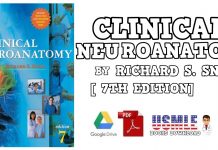

- CLINICAL NEUROANATOMY MADE RIDICULOUSLY SIMPLE USMLE HOW TO
- CLINICAL NEUROANATOMY MADE RIDICULOUSLY SIMPLE USMLE SERIES
- CLINICAL NEUROANATOMY MADE RIDICULOUSLY SIMPLE USMLE FREE
It’s short, and features dozens of one-page cases in Q&A format that go through the common presentations you need to know, sorted into chapters by organ block. Though I didn’t find First Aid for the Basic Sciences: General Principles or : Organ Systems to be that helpful, Cases is a real gem.
CLINICAL NEUROANATOMY MADE RIDICULOUSLY SIMPLE USMLE SERIES
Surprisingly few of my classmates, however, realized that there’s more to the series than First Aid alone. First Aid Cases for the USMLE Step 1: Obviously everyone gets First Aid.
CLINICAL NEUROANATOMY MADE RIDICULOUSLY SIMPLE USMLE FREE
Her other resources (e.g., the free Path Bites email list) are worth checking out as well, but I particularly liked Clot or Bleed. It only takes a few hours to read, and it breaks down coagulation into a simple, memorable framework that will help you speed through boards questions. Clot or Bleed: A Painless Guide for People Who Hate Coag: This is a short eBook by pathologist and master educator Kristine Krafts, MD.It was-along with Pathoma, Crush Step 1 and First Aid-one of the few books I had spiral-bound to make it easier to read and to write in it. It does a great job of walking the fine line between oversimplifying the material and dragging on too long. It’s relatively short (187 pages), and it contains short chapters on each organ block that will get you oriented as you begin reviewing each one. Clinical Pathophysiology Made Ridiculously Simple: This is the second-best book in the MRS series.Read through it and copy down the key diagrams towards the beginning of your neuro review. I found the beginning of the book much higher-yield than the end, which gets a bit off-the-rails describing each pathway. Your struggles memorizing cranial nerve nuclei have come to an end. Each section is drawn as a cutesy mnemonic (e.g., a gingerbread man) that lets you pin the key features down. Most notably, it contains one page with five key sections through the brainstem.

Unlike Clinical Micro MRS, Clinical Neuroanatomy is tiny (barely over 50 pages, and small enough to fit in your white coat). Clinical Neuroanatomy MRS, however, takes a different tack. That said, they all have different authors and vary greatly in quality, with Clinical Microbiology MRS leading the pack.

It also will help you review a lot of high-yield facts for psychiatry.

CLINICAL NEUROANATOMY MADE RIDICULOUSLY SIMPLE USMLE HOW TO


 0 kommentar(er)
0 kommentar(er)
